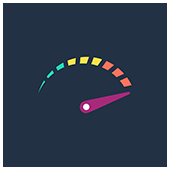Virtual containers have incrementally increased the ability of users to create portable, self-contained kernels of information and applications since the technology first appeared in the early 2000s. Now, containers are one of the biggest data trends of the decade -- some say at the expense of the virtual machine (VM) technology that preceded them. Read […]
 Virtual containers have incrementally increased the ability of users to create portable, self-contained kernels of information and applications since the technology first appeared in the early 2000s. Now, containers are one of the biggest data trends of the decade -- some say at the expense of the virtual machine (VM) technology that preceded them. Read on to find out some of the performance differences between containers and virtual machines, and how the two can work together for your business.
Virtual containers have incrementally increased the ability of users to create portable, self-contained kernels of information and applications since the technology first appeared in the early 2000s. Now, containers are one of the biggest data trends of the decade -- some say at the expense of the virtual machine (VM) technology that preceded them. Read on to find out some of the performance differences between containers and virtual machines, and how the two can work together for your business.
When it comes to the virtual world, containers and VMs are not all that different. The VM is a good option for those who need to use more than one operating system in the course of a business project, while containers serve those who are comfortable staying within a Linux or Windows operating system without deviating. There are performance advantages to using containers, although these are counterbalanced by organizational advantages derived from a VM system.
Performance Nuances
VMs and containers both work from a virtual platform; therefore, the differences in performance relate to how they are configured and utilized by the people who maintain them.- Faster startup time: Containers don't have as much to start up, making them open more quickly than virtual machines. While it may not seem revolutionary, this can be up to a few minutes per instance -- a cost that adds up to quite a bit over the course of a year or more.
- Resource distribution: Containers only need to pull hardware resources as needed, while a VM requires a baseline of resources to be allocated before it will start up. If you have two VM processes running at the same time, this might mean two of the same programs are pulled up even if they aren't being used.
- Direct hardware access: A VM cannot pull information from outside of itself (the host computer), but a container can utilize the host system as it runs. This may or may not matter depending on what your users are doing, but certainly puts a point in the container column nonetheless.
Virtualization is an incredibly tricky solution to grasp in its entirety. New avenues spring up all the time to get more use out of its benefits, and it might be tempting to take a “wait and see” mentality. In reality, one of the best things about virtualization is how adaptable it is as a business solution. We suggest you get into the game as soon as possible; give us a call so we can tell you how.

 Businesses use apps every day to help them complete business tasks. Unfortunately, developing those apps is challenging if business owners don’t have a great deal of programming and coding experience on staff. Google has announced their solution to this problem: App Maker. This is a simple and easy solution to the problem of developing an app with minimal coding required so that a business can easily generate apps that fulfill specific needs. Learn more from our summary of this new service here.
Businesses use apps every day to help them complete business tasks. Unfortunately, developing those apps is challenging if business owners don’t have a great deal of programming and coding experience on staff. Google has announced their solution to this problem: App Maker. This is a simple and easy solution to the problem of developing an app with minimal coding required so that a business can easily generate apps that fulfill specific needs. Learn more from our summary of this new service here. SharePoint and OneDrive are similar programs used to help business owners manage and share company data across the board. Choosing which program will best utilize the space and resources you have can be confusing. For a quick overview of these unique programs and how to rationalize the choice for your business, continue reading.
SharePoint and OneDrive are similar programs used to help business owners manage and share company data across the board. Choosing which program will best utilize the space and resources you have can be confusing. For a quick overview of these unique programs and how to rationalize the choice for your business, continue reading. If you own an older Android, you might have already experienced the impact of the Gooligan Malware virus. Since August, the infection has struck an estimated 1.3 million Android phones, and it shows no signs of stopping. For those unaware of the Gooligan strain, here are a few key details you need to know right away.
If you own an older Android, you might have already experienced the impact of the Gooligan Malware virus. Since August, the infection has struck an estimated 1.3 million Android phones, and it shows no signs of stopping. For those unaware of the Gooligan strain, here are a few key details you need to know right away.